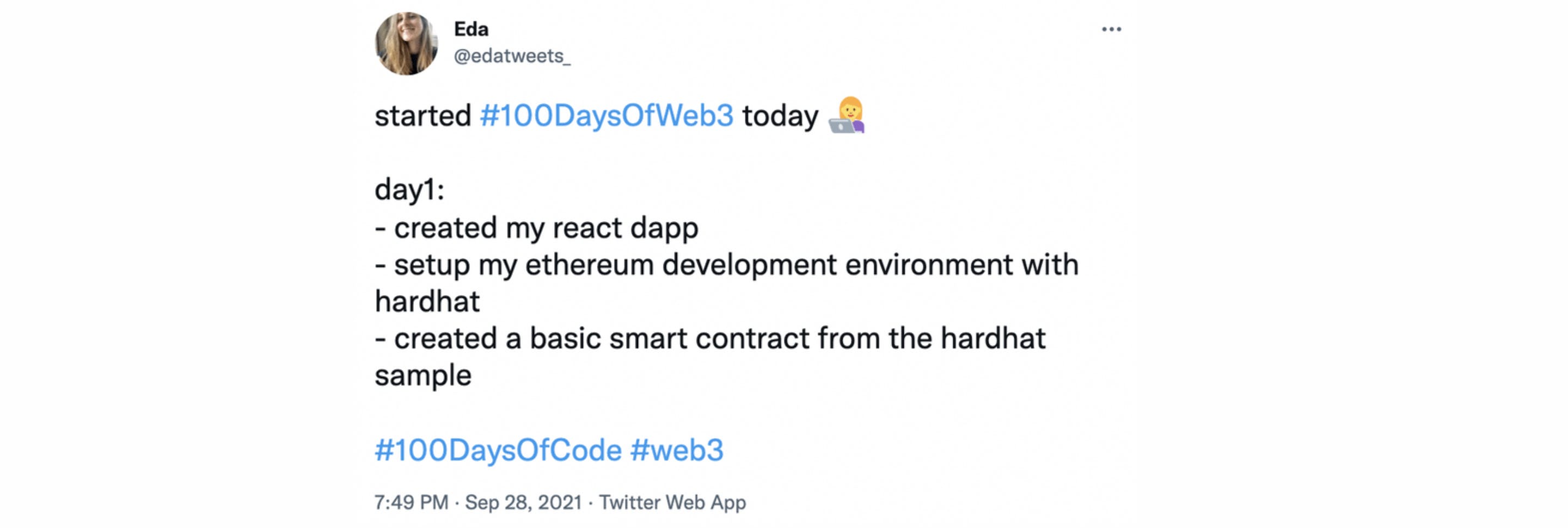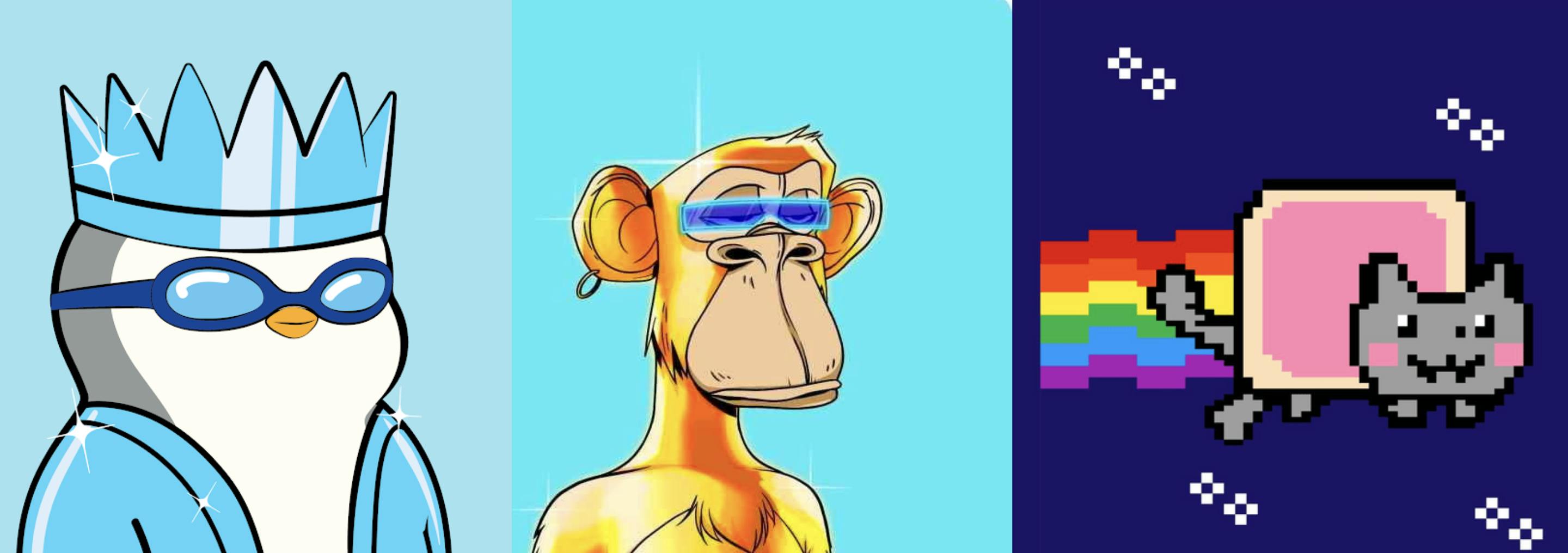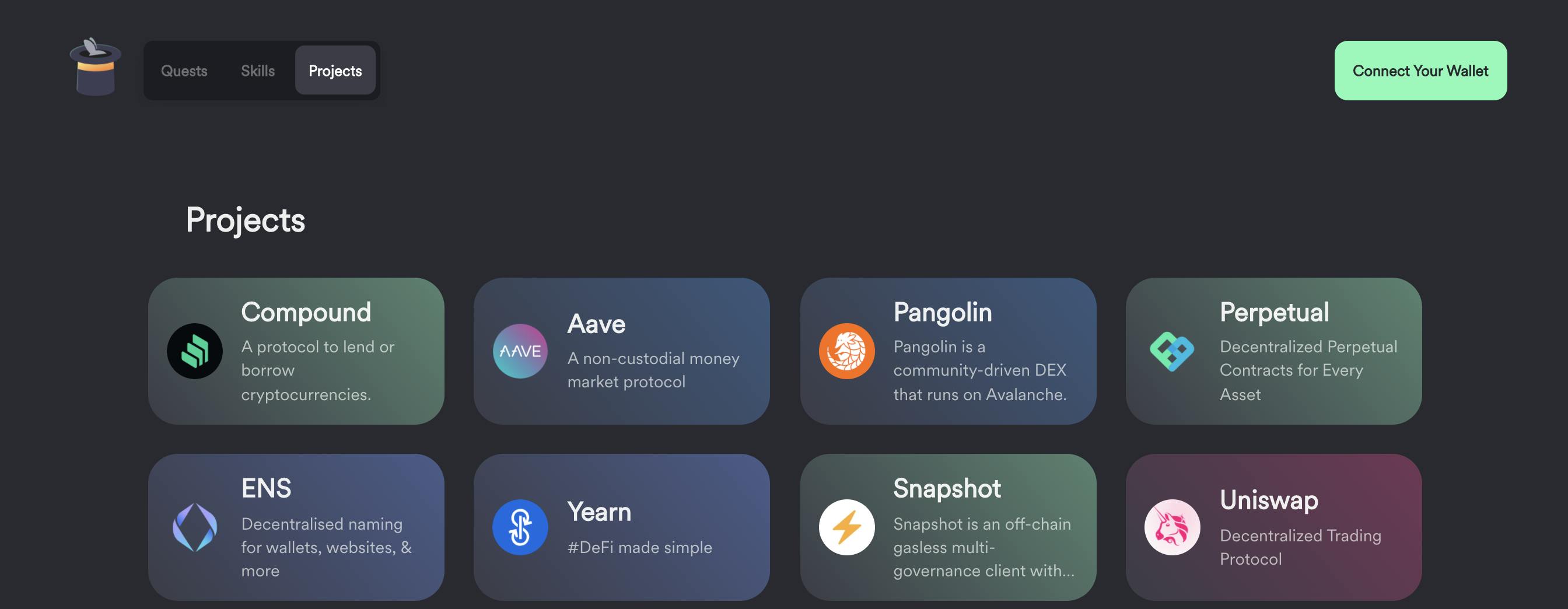What's a wallet? What's this gas fee? How can I see this jpeg that I got as an airdrop?
There are many new terms and concepts in web3 which do not exist in the traditional tech world.
When I first started learning about web3, my main challenges were understanding the fundamentals. Hence, in this post, I want to lay out the basics and a roadmap for anyone entering the space ,with a section for developers. It's an e-book kind of blog post.
This post has been long in the making and by no means the ultimate guide for a developer. There are amazing resources from developers in the space, and I've tried to link the resources that have helped me massively. So instead, it's a post that aims to answer my primitive questions provide a curated list of resources and steps to get involved.
Introduction
Web3
Why?
Some people love it; some people hate it. For me, its innovation with no boundaries. That's been what's fueling me as I learn about web3. It has parts of everything I'm interested in and makes me question many things I've taken as given.
I've written a detailed post about why I'm excited about web3; you can jump here for it.
In short, the open-source nature, trustless architecture and credible neutrality are three core features that I believe are very important to have in the systems we need to have. Web3 is reshaping the web, redesigning at its core, and I'm super excited to see what it will bring!
But first, what even is web3?
Web3 is mainly described as the decentralized web; it's still a term that's being defined.
I enjoyed this definition from this article by Dave Peck & the PSL Team:
"Web3" is the name* given to a suite of peer-to-peer technologies — particularly blockchains and distributed filesystems (like IPFS)— that are used to build modern "decentralized apps", or dApps.
Simply put, it's a group of technologies that are all decentralized and used to create decentralized applications.
How does it work?
Peer-to-peer(p2p) technologies are the building blocks for web3. Today we mainly see the use of decentralized blockchain technology, which is on a peer to peer network.
There are different layers to the web3 technology stack from file storage, databases, identity et. Essentially, in web3, there isn't any person or marketplace in the middle, but instead, there are protocols governed by network contributors which have economic incentives to participate, that creates a credibly neutral.
Keep in mind that: Blockchain, Bitcoin, web3 and crypto are not the same things. These terms are often used interchangeably however are in fact, very far apart. We'll be covering them below.
Getting started in web3: #100daysofweb3
My recommendation is to start the 100daysofweb3 challenge to learn about web3. Then, you'll hit the ground running!
A simple guideline: Learn/build/create about web3 for 100 days.

If you want to read more about my journey & recommendations, jump over to these posts:
Here's a great way Francesco is documenting his #100daysofweb3 journey on GitHub!
I've curated many of my resources on this post; let's get to it!
Introduction
Here's a very basic outline on how to get started:
- Start by using the tools
- Read, research, repeat
- Build
- Join
Let's cover each step with details and resources in this post.
1. Start by using the tools
I cannot iterate how important it is to understand the primitives and what you can do in the web3 world before going all in. Do anything related to crypto but DO it. Don't just listen to a podcast or read a blog post. It's the best way to understand the fundamentals because there are a lot of new tools and concepts.
Easy to say, but what can you actually do? And let's just give some preliminary information for you to hit the ground running.
⚠️ Also, please note that this is not financial advice. These are some suggestions on tools that you can start using. Please make sure to do your own research.
Setup a crypto wallet
A cryptocurrency wallet -a crypto wallet for short-is like a bank account for your digital assets. It allows you to send and receive cryptocurrency transactions. Basically, it records everything that you do.
The wallet doesn't actually hold your cryptocurrency. Instead, wallet addresses are added to the blockchain as part of the transaction details. From there, you can derive the amounts in each wallet address.
Examples of cryptocurrency wallets are Metamask, Ledger, Phantom and TrustWallet.
Never ever share your wallets seed phrase! This is basically your password and whoever has it, has access to your funds.

Exchange some Cryptocurrencies
I'll give you some context before continuing 😉
Blockchain & Cryptocurrencies
Blockchain is a shared and immutable ledger. On the blockchain, the information is distributed among multiple computers, which work together to provide the underlying infrastructure.
Cryptocurrencies(crypto) are digital currencies that are secured by cryptographic functions. Most cryptocurrencies are based on blockchain technology. They are represented by entries onto the blockchain.
Bitcoin, the most popular cryptocurrency, is powered by blockchain technology. Blockchain is the technology that makes bitcoin possible and has applications way beyond bitcoin. Bitcoin is not blockchain or vice-versa.
Ethereum, Avalanche and Solana are other platforms that are built using blockchain technology. Different blockchain platforms prioritize various features such as decentralization, cost, speed, security...
Coin vs. Token
Cryptocurrencies can be crypto coins or crypto tokens. The two terms are often used interchangeably; however, they are two separate terms.
A coin exists on its blockchain. It is a digital representation of money for that blockchain. BTC, ETH or LTC are cryptocurrency coins; they each have their own blockchain.
A token functions on top of an existing blockchain via smart contracts. Unlike a coin, a token usually has a utility associated with it. For example, Uniswap is an exchange protocol built on top of the Ethereum blockchain and has its token called UNI. UNI holders can vote on development proposals and decisions for the platform.
In short, coins have their own blockchain and are used as a medium of exchange, whereas tokens live on top of a blockchain and can have different values or utilities.
Transactions & Gas Fees
Every action on the blockchain has a cost. So when you want to create/buy/sell a token or perform any action, you need to pay the gas fee.
Gas is the measure of the unit to denote the cost for a transaction. Accordingly, gas fees are the fees that are paid to the network to process the transactions.
Get an NFT

Please note that this is not financial advice, make sure to do your own research.
NFT stands for Non-Fungible Token.
- Non-fungible: Fungibility indicates that a good can be interchanged (a word I googled many times). Non-fungible refers to goods that have unique properties and can not be changed with one another. For example, bitcoin is a fungible asset. If we each have a bitcoin and send them to each other, in the end, we'll have the same thing. On the other hand, a house is non-fungible. If we decide to switch homes, we'll end up with something different.
Token: To recap, blockchain is a shared and immutable ledger, and a token is a digital asset living on top of the blockchain.
NFT's are unique digital assets on the blockchain. They are each one of a kind; this allows for tracking the ownership. Any digital asset can theoretically be an NFT. The most popular are Collectibles and Art.
Today, OpenSea is the most popular secondary market for NFT's.
More quests on RabbitHole
There are lots more to do on RabbitHole, which is an educational platform helping people get into web3 by doing stuff. For example, you can register an ENS name, lend tokens and many more.

2. Read, research, repeat
There is so much to learn and too many myths! False information is one of the main challenges in the crypto world.
Make sure to spend some time and do your own research.
Projects and platforms websites
Here are some of the most popular blockchain & protocols:
Note that The Web3 technology stack doesn't only consist of the smart contract layer. There are many layers to the technology stack, I've added some of them below.
- Ethereum: an open-source, decentralized blockchain platform with smart contracts. It has its native cryptocurrency coin called Ether(ETH). It's the first blockchain with smart contract functionality.
Solana: another decentralized blockchain platform with smart contracts. It has faster transactions and lower cost when compared to Ethereum. Its native currency is SOL.
Helium: protocol for deploying wireless networks. It's a project that creates a business model for deploying and managing large wireless networks. Has its native token HNT.
Arweave: decentralized data storage protocol to store files permanently.
- Ceramic Networks: A decentralized platform for data.
- Chainlink: decentralized oracle network. Expands the ability of smart contracts by getting real-time data from outside of the blockchain.
- The Graph: decentralized indexing protocol for querying networks like Ethereum and IPFS.

Podcasts & Videos
- General: Bankless, The Defiant
- Web3 interviews: RabbitHole, Unstoppable Domains
- Helium: The Hotspot Podcast
- Decentralized Finance(DeFi): Finematics
Curated Resources
- UseWeb3 by Wesley. A curated overview of the web3 world. I highly recommend bookmarking this. It has most of the resources I have included here and many more.

Newsletter & Reading lists
- Newsletter:Not Boring Capital Newsletter- It's not only about web3, but most of the pieces are.
- Here is a great web3 reading list by Gaby.
Bonus: some of my favorite content:
- The Wonders of Web3 And Much More | The Tim Ferriss Show w/Chris Dixon and Naval Ravikant on The Tim Ferriss Show
- How to Invest in the Future | Cathie Wood, Chris Burniske, Yassine Elmandjra on Bankless Podcast
- Web2 vs. Web3 on Ethereum Foundation
- Solana Summer and Own the Internet a Bull Case for Ethereum by Packy McCormick
- 2021: Helium Breakout Year by Frank Mong
- The Metaverse: 101 by Meagan Loyst
(For Developers) 3. Building
Introduction to Building in Web3
Decentrazlied Applications(dApp)
A dAppis just like any software application- any website or phone app. The difference is that the backend code runs on a decentralized network such as a peer to peer network or a blockchain.
So an application built with web3 technologies is called a dApp.
What are the web3 technologies?
The tech stack is different from the traditional web architecture (aka web2). Nader has a post about the tech stack; it's the most comprehensive guide I've found on the topic and one of my favourite articles.
He mentions the following in regards to the web3 tech stack:
It turns out, the answer to this is not so straightforward because:
- The paradigm is completely different in many ways
- The web3 tools, technologies, and ecosystem are less mature than web2
What about these "Smart contracts"?
Smart contracts are just like contracts in the real world, except they are digital.
A smart contract is a self-executing computer program stored inside the blockchain. When the conditions of a smart contract are met, the code is automatically executed. This removes the intermediaries needed in real-life contracts and creates a trustless environment for users. Trustless means that the users do not need to trust each other because they can rely on the underlying code.
Some smart contract languages are Solidity, Vyper and Java.
Some tips to get started
Don't wait for perfect, build and ship! You don't need to create a complicated finance application, anything that uses the tools and the platforms.
Building is fun when done together. Consider joining a developer group to learn together. Here are some which you can check out and hope on to their discord:

- ⚠️ Now very important: Don't push your wallet private keys to GitHub! The Bot's are wild, and your funds can be gone in seconds.
- I'd highly recommend creating separate wallet(s) for development.
- You can add your keys to a .env file and exclude it from commits by adding .env to the .gitignore
- You can start with a private repo
Resources & Roadmaps
Here are some of the resources and roadmap's that I've found to be very comprehensive and helpful: (there are many different areas here, make sure to choose the resources that suit your interests and goals best)
- Solidity, Blockchain, and Smart Contract Course – Beginner to Expert Python Tutorial by Patrick Collins
- Buildspace: Learn about web3 by creating projects; they continue expanding and adding new projects! For example, they now have Solana and Avalanche projects.
- Nader Dabit: make sure to follow Nader's youtube. He has live streams deep-diving into the technology and the code with many people. Here's The Complete Guide to Full-Stack Web3 Development, a great blog post.
- Scaffold-Eth: It's a tool by Austin Griffith to build decentralized applications. I'd highly suggest to follow speed run ethereum, there are different quests that teach you solidity and also why and when smart contracts are powerful.
- Complete Web3.0 And Solidity Development Roadmap 2022 by Vitto
- UseWeb3 Tutorials: a curated list of many tutorials and guides
- Web3 university: a library of Web3 educational resources
- Developing projects on the Helium network
- The Ultimate Smart Contract Developer Roadmap by Oliver
Projects
If you're looking for something more specifics, here are some of the projects that you can look into:
- "Hello, World": Writing Your First Smart Contract
- Create a Full Stack Ethereum Development
- Create a Full Stack Solana Development
- Create your own Cryptocurrency
- Create your NFT Collection on Ethereum
- Buymeacoffee App
- Follow the challenges on Speed run ethereum
People
Here are some of my favourite builders and communities in the space.
4. Get Involved
There are so many different areas you can get involved in. Join a DAO, be active on Twitter, reach out to people. It's not just smart contract experts or developers that can get involved, but there are different areas from marketing, writing, designing etc.
DAO's
DAO stands for Decentralized autonomous organization. It's like a real-world community with shared goals with tokens for governance and incentives. There are many DAO's for acceleration education in web3, buying the US Constitution, making the world bankless etc.
- Find and learn about DAO's on DAO Central
Developer DAO
As a member of the DAO, and someone who has met many amazing people, learned a ton and participated in developer DAO would like to especially mention it. Especially if you are a developer, I'd highly suggest to come and join us. We're a community of web3 enthusiasts learning and building in the space.
I'd also suggest subscribing to the newsletter sent out every week with updates from the DAO and the web3 ecosystem.
Grants and Bounties
Many projects are looking for builders and creators; here are some grant programs you can check out:
Full-time Opportunities
Web3 is an open ecosystem. You don't need to be employed to contribute to a project or write about it. Instead, you can create content and become part of the community. You'd be surprised at how small the web3 ecosystem is, and once you create a piece of content that attracts the web3 audience, opportunities will come your way.
If you love what you do and having fun, there are many employment opportunities:
- Check out this article by Kacie; it's a great overview of what opportunities and how to prepare
- UseWeb3 Job Board
Follow the projects and people on Twitter, create a project and reach out to the teams! In the web3 world, Twitter is the new Linkedin.
Twitter is a powerful platform, and make sure to use it in the best way. Keep your message concise and to the point when you want to reach out.
I hope you enjoyed the post, and it can help you with your web3 journey 🌟
If you have any questions or comments, drop them below, or reach out to me on Twitter! I'd love to hear from you! See you in the next post 👋

